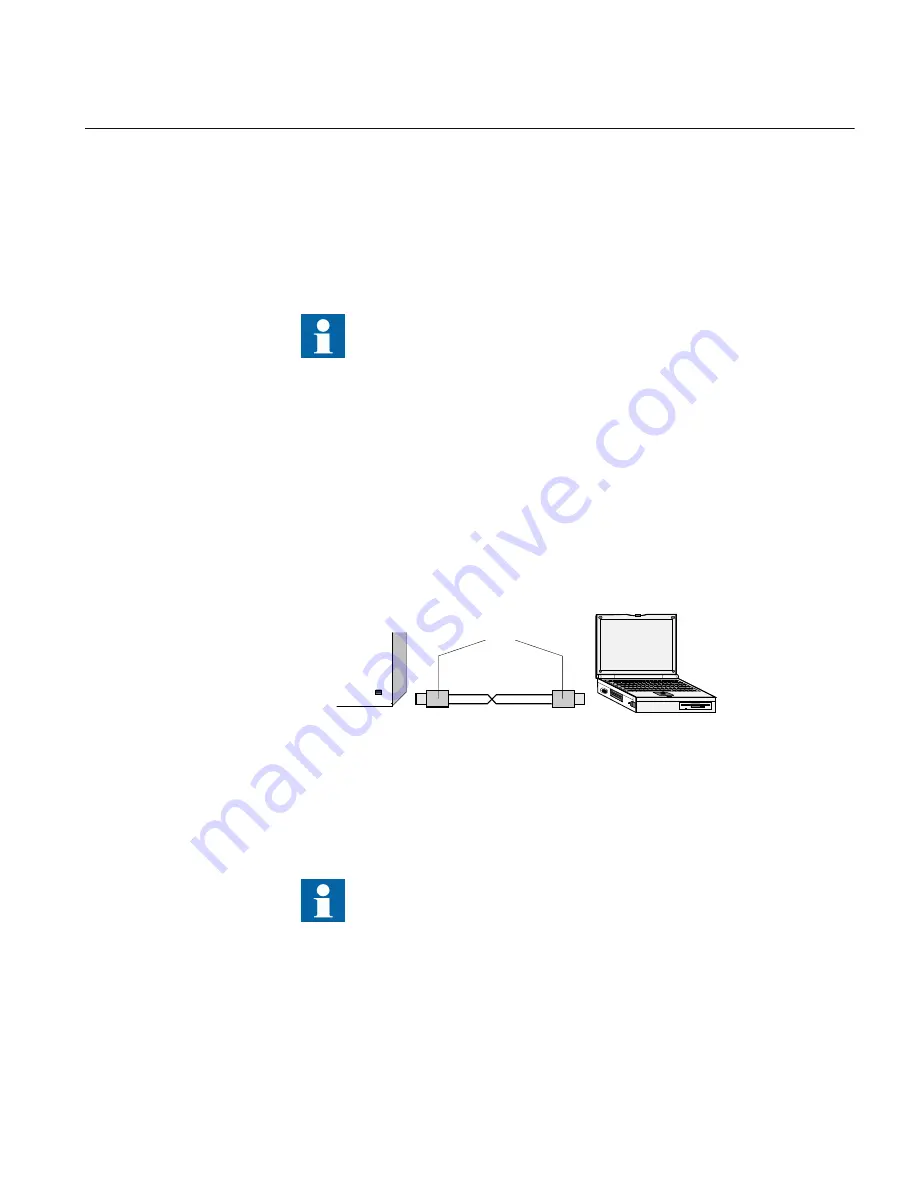
•
The default IP address for the IED front port is 10.1.150.3 and the corresponding
subnetwork mask is 255.255.255.0, which can be set via the local HMI path
Main
menu/Configuration/Communication/TCP-IP configuration/1:ETHFRNT
.
•
The default IP address for the IED rear port is 192.168.1.10 and the corresponding
subnetwork mask is 255.255.255.0, which can be set via the local HMI path
Main
menu/Configuration/Communication/TCP-IP configuration/1:ETHLAN1
and
Rear OEM - port CD
.
The front and rear port IP addresses cannot belong to the same subnet
or communication will fail. It is recommended to change the IP address
of the front port, if the front and rear port are set to the same subnet.
Setting up the PC or workstation for point-to-point access to IEDs front
port
A special cable is needed to connect two physical Ethernet interfaces together without
a hub, router, bridge or switch in between. The Tx and Rx signal wires must be crossed
in the cable to connect Tx with Rx on the other side and vice versa. These cables are
known as null-modem cables or cross-wired cables. The maximum length should be
about 2 m. The connector type is RJ-45.
IEC09000096-1-en.vsd
PCM600
Tx
Tx
Rx
Rx
RJ-45
IED
IEC09000096 V1 EN
Figure 5:
Point-to-point link between IED and PCM600 using a null-modem cable
The following description is an example valid for standard PCs using Microsoft
Windows operating system. The example is taken from a Laptop with one Ethernet
interface.
Administrator rights are requested to change the PC communication
setup. Some PCs have the feature to automatically detect that Tx
signals from the IED are received on the Tx pin on the PC. Thus
straight (standard) Ethernet cable can be used.
When a computer is connected to the IED and the setting
DHCPServer
is set to
Enabled
via the local HMI path
Main menu/Configuration/Communication/TCP-IP
1MRK 511 245-UUS -
Section 4
Setting up a project
650 series ANSI
29
Engineering Manual















































